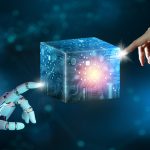“Machine learning” appears in more articles every day, surrounded by fanfare and grand promises. But the hype rarely answers questions. What is machine learning? What makes it useful? And why should you take advantage of it when proven alternatives persist? Here's a look at what machine learning is and how you can benefit from implementing it.
What Is Machine Learning?
Machine learning uses collections of cooperating algorithms combined with large data sets to imitate the way humans learn. This type of programme, known as a mlops platform, combines trial and error and comparison to known quantities to improve its understanding with every iteration. While different types of machine learning exist — deep learning and neural networks are alternatives — standard machine learning requires more structure in the input data in order to maximise return on learning investment. This structure demands more human control in the design stage but creates a more accurate model.
Three Main Parts Of Machine Learning
A machine learning algorithm has three main components:
- Decision
- Error
- Update/optimise
First, the algorithm analyses patterns in the input data set and classifies or sorts them as requested. Previous comparisons provide the framework to classify this new data. After sorting is complete, it enters the error phase, where it compares the guess to certain known examples and determines how close it came to perfect accuracy. Once the algorithm accounts for this understanding, it updates its model to account for the correct answer and uses it to improve future categorisation.
It is for this reason that YouTube provides users with a "not interested" option. This option informs the algorithm that the recommendation does not fit. Using it tells the programme that when it sorted the user into a specific category and recommended content that others in that category enjoyed, it missed the mark. The programme then uses that feedback to improve future recommendations.
Uses And Benefits Of Machine Learning
Entertainments sites like YouTube and Netflix provide some of the most famous algorithms to direct users toward their content. The sheer volume of media stored on these sites could never be sorted by a human, and personalised recommendations for each of their millions of users are equally impossible. While a survey of interests and a tagging system could provide a similar content delivery mechanism, the raised barrier to entry and inability to change alongside user preference would cripple any media site.
Machine learning also fulfils more serious needs. Speech recognition programs such as Apple's Siri update themselves at regular intervals to better understand their users’ speech patterns and needs. While these devices are convenient, those without the dexterity to operate a typical smartphone interface (such as the disabled and elderly) are the true beneficiaries of this technology. It opens the gates to the digital world for those who might otherwise be left behind.
On an enterprise scale, machine learning allows corporations to analyse vast quantities of sales and demographic data and drive future decisions with those analytics. As corporations grow larger, human analysts — even teams of them — become physically unable to draw solid conclusions in a reasonable amount of time. Instead, machine learning sorts data into understandable insights which can be easily ingested and acted upon, which allows companies to make decisions more efficiently. Boards spend less time on research and review and more time on consideration and action.
Unknown Potential
It's impossible to know if this technology has already peaked or if computer scientists have only scratched the surface. With a variety of different methods and mlops platforms to choose between, machine learning already presents incredible opportunities for both providers and consumers of new technology. Whether in tech, business, finance, customer service, or personal media, machine learning developments regularly automate more aspects of personal and professional life every day.











